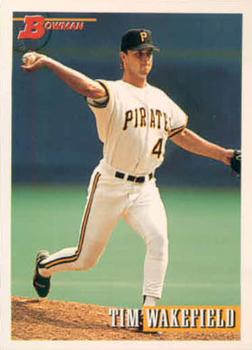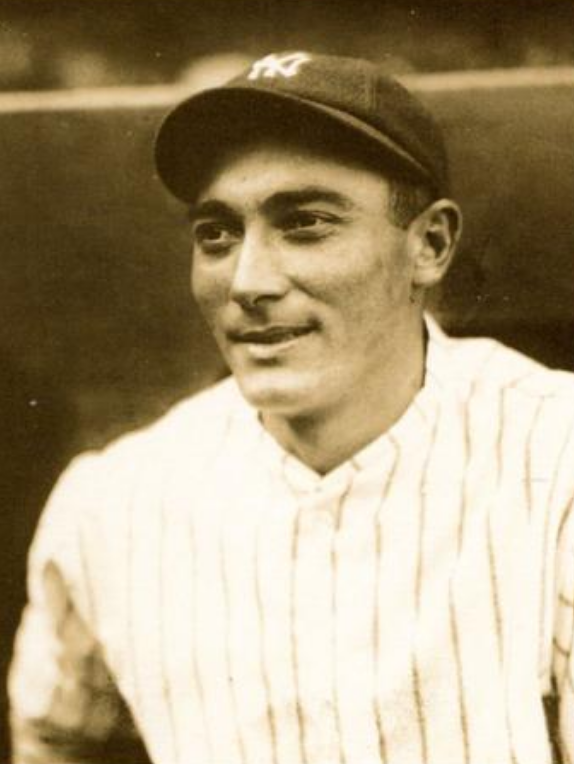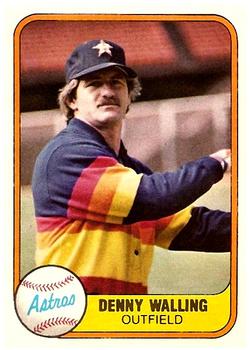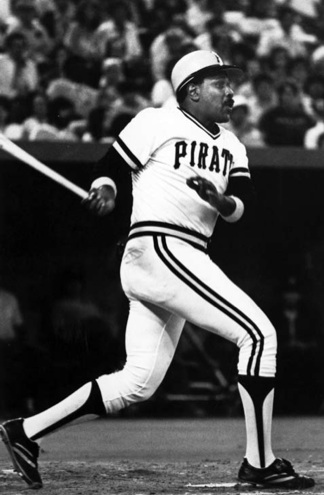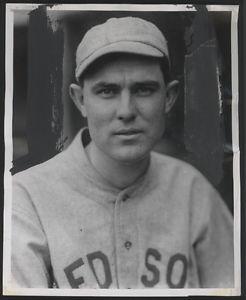October 5, 1942: Cardinals clinch World Series on Kurowski’s ninth-inning clout
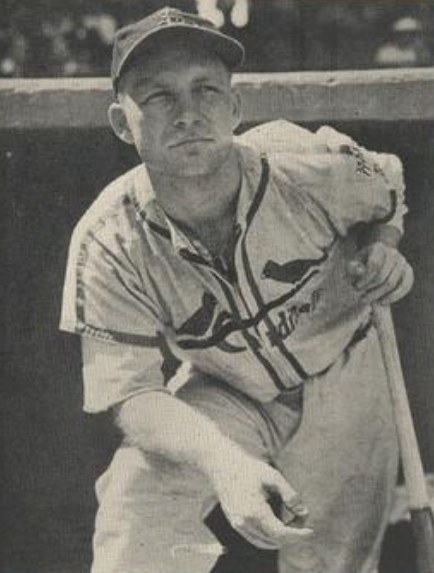
The New York Yankees did their best to intimidate the umpires and the opposition St. Louis Cardinals throughout the 1942 World Series. The Yanks saved some of their best rattling for Game Five.
As the teams swapped lineups at home plate before the game, New York coach Art Fletcher told home-plate umpire Bill Summers that St. Louis equipment manager Butch Yatkeman should be removed from the dugout during the game. Yatkeman had been razzing the Yankees during the Series. By forcing him into the clubhouse, the Yankees hoped to throw St. Louis off stride.
Summers had no choice but to tell Cardinals captain Terry Moore it was within New York’s right to insist on Yatkeman’s removal. Moore, acceding to Summers, then faced Fletcher said, “This is just one more reason why there’s going to be no tomorrow in this World Series.”1 Moore’s determination had previously been mirrored in the clubhouse byMarty Marion. The St. Louis shortstop had told one and all that if they won the Series, each player would get $6,193, a comment several thought might be a jinx. Marion was determined: “The hell it is.”2
Cardinals manager Billy Southworth decided to start Johnny Beazley, who had beat New York in Game Two. The Yankees skipper, Joe McCarthy, countered with Red Ruffing, winner of Game One. Was Ruffing going to be the ace, like he was for the first eight innings and had shut down the Cardinals on one hit, or the pitcher who was chased out of the game in the ninth? Longtime Yankee fans noted that the list of seven pitchers who had appeared in the Series did not include Lefty Gomez. The 33-year-old Gomez, who had compiled a 6-0 record in helping to secure five World Series championships during his career, was at the end of the line after an ineffective 1942 season. He was sold to the Boston Braves the following January.
Although no team except the 1925 Pittsburgh Pirates had come back from a three-games-to-one deficit in a seven-game Series, New York seemed like it had a decent chance to be the second team to do so. They were 58-19 at home during the regular season and had not lost a World Series in their last eight appearances.
A moist, gloomy fog enveloped Yankee Stadium as 69,052 fans converged on the ballpark to see if New York could stop the Cardinals’ momentum.3 The game started with Ruffing walking the leadoff batter but getting out of the inning with a strikeout and double play. Phil Rizzuto, who came into the game hitting a robust .353 in the Series, stunned the crowd with a leadoff homer to left; he had hit just four during the regular season. His run held the lead until the top of the fourth, when Enos Slaughter’s blast into the right-field stands tied the score.
New York promptly regained the lead in the bottom of the inning. Red Rolfe laid down a bunt single and went to second on Beazley’s throwing error, the first of four St. Louis committed in the game. Rolfe moved to third on a fly ball and scored on Joe DiMaggio’s single. Charlie Keller’s base hit drove DiMaggio to third. With runners on first and third, Beazley bore down, striking out Joe Gordon and getting Bill Dickey on a force play.
After the Cardinals went down in the top of the fifth, Beazley found himself in trouble again thanks to some shoddy fielding. Ruffing singled with one out and Rizzuto and Rolfe reached on successive infield errors to load the bases. Beazley wiggled out of the situation, inducing a popup and force play. Twice in two innings, the Yankees had been on the cusp of breaking the game open.
In the top of the sixth, Moore singled and went to third on Slaughter’s second hit of the game. Stan Musial popped to short; not deep enough for Moore to score. Walker Cooper, following Musial, hit a flare into short right field. Roy Cullenbine raced over to catch the ball and found himself out of position to throw home. Moore easily raced in to tie the game ahead of Cullenbine’s offline toss.4
The game went into the top of the ninth with no further score. Cooper singled to open the top of the inning. He was sacrificed to second, and third baseman Whitey Kurowski came to the plate. Kurowski had not done much in the game, popping up and flying out twice. This made him hitless in six at-bats against Ruffing for the Series; Ruffing had struck him out three times in Game One. On a 1-and-1 count, Ruffing threw a change of pace to Kurowski, who hammered it into the left-field bleachers, giving St. Louis a 4-2 lead.5
Down to their last chance in the bottom of the ninth, the Yankees began to mount a comeback. Gordon, who was 1-for-21 in the Series, led off against Beazley with a single. Dickey grounded to second baseman Jimmy Brown, who muffed it for his second error of the game. With two on and no outs, the Yanks seemed poised to get back in the game. But fate took a hand on behalf of the Cardinals in the unlikely personage of Harrison J. Weaver, the team’s trainer.
St. Louis’s furious drive to the pennant, a 43-8 run since early August, had been aided by Doc Weaver’s ability to keep things loose in the clubhouse. For some inane reason, by playing a wacky Spike Jones rendition of an inane hillbilly song, “Pass the Biscuits, Mirandy,” on his phonograph after Cardinal victories, Weaver supposedly helped inspire their drive. 6
Weaver, however, a former tackle under St. Louis general manager Branch Rickey when Rickey coached football at Ohio Wesleyan, possessed another talent to aid the Redbirds.7 It was the “double whammy.” The whammy consisted of crossing his wrists, putting his hands back to back, and closing the second and third fingers of each hand so that the first and fourth fingers protruded like horns. When used, it was supposed to jinx its recipient.8
With Jerry Priddy at bat and no one out, a sacrifice was anticipated. Weaver, urged on by Cardinals infielder Frank Crespi, put the double whammy on Gordon. Beazley threw a high pitch to Priddy, negating the sacrifice attempt. Priddy took the pitch and Cooper gunned the ball to second. Gordon, anticipating a bunt, had gone one step too far. Marion put the ball on the errant Gordon. Umpire George Barr called him out.9 The double whammy worked.
The rest of the game was quick work. Priddy popped up and George Selkirk, pinch-hitting for Ruffing, grounded out to Brown, who made up for his earlier error by throwing out Selkirk. The Cardinals were world champions, having swept the last four games of the Series against the highly favored Yankees, the last three at Yankee Stadium. Marion’s announcement about winning shares of $6,193 for each player had become a reality.
After the celebration had died down, the Cardinals boarded their train back to St. Louis. Rickey, though, did not go with them even though he had reservations.10 This was his last game with the Cardinals. Rickey joined the Brooklyn Dodgers over the winter, his contract with St. Louis not being renewed after a falling-out with owner Sam Breadon. The Cardinals went on to win three pennants and two World Series in the next four years, but without Rickey the team gradually faded over the years. The Cardinals did not reappear in the fall classic until 1964. During that period, the Dodgers won eight league championships, thanks largely to the talent of Rickey.
The war, always looming over the Series, came closer to home before the 1943 season began. New York World Series participants DiMaggio, Gordon, Buddy Hassett, Rizzuto, Ruffing, and Selkirk had gone into the service. As did Cardinals hero Beazley, Crespi, Moore, and Slaughter.
Sources
In addition to the sources cited in the Notes, the author also accessed Retrosheet.org and Baseball-Reference.com.
http://baseball-reference.com/boxes/NYA/NYA194210040.shtml
http://retrosheet.org/boxesetc/1942/B10040NYA1942.htm
Notes
1 James N. Giglio, Musial, From Stash to Stan the Man (Columbia, Missouri: University of Missouri Press, 2001), 79.
2 Peter Golenbock, The Spirit of St. Louis: A History of the St. Louis Cardinals and Browns (New York: Avon Books, Inc., 2000), 246.
3 John Kieran, “Through the Gloom in the Bronx,” New York Times, October 6, 1942: 28.
4 Harold Kaese, “Cardinal Rookie’s Home Run Knocks Crown Off Yankees: Kurowski’s Clout Wins Fifth Game 4-2, for Beazley and Gives St. Louis Title,” Boston Globe, October 6, 1942: 1.
5 Golenbock, 245; Richard Peterson, ed., The St. Louis Baseball Reader (Columbia, Missouri: University of Missouri Press, 2006), 250.
6 http://www.mudcat.org/thread.cfm?threadid=529
7 Bob Broeg, “Cards Mourn Dr. Weaver, Trainer, Morale-Builder,” The Sporting News, June 1, 1955: 36.
8 George Vecsey, Stan Musial: An American Life (New York: Ballantine Books, 2011), 102-103.
9 Peterson, 250.
10 Sid Keener, “Cards’ Executive Fails to Catch Train With Champs,” St. Louis Star and Times, October 6, 1942: 18.
Additional Stats
St. Louis Cardinals 4
New York Yankees 2
Game 5, WS
Yankee Stadium
New York, NY
Box Score + PBP:
Corrections? Additions?
If you can help us improve this game story, contact us.


